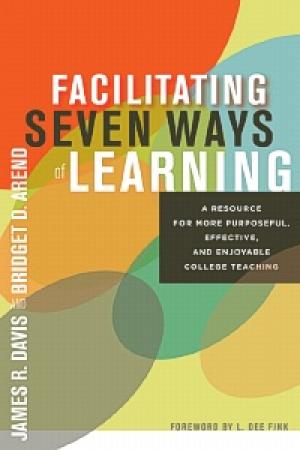Resources by Jack L. Seymour

We all craft a syllabus for each class, but honestly what is a syllabus and for whom is it written? I hope to expand our vision. The quick and typical answer is: A syllabus is a plan for how we hope to engage students with content and practices of our field of study. Of course, a syllabus is a covenant of learning between teacher and student about the outcomes students might expect from the class. Yet syllabi have many other audiences, and their construction is a daunting task. Over the last two years, I have reviewed nearly a hundred introductory syllabi in my field (Christian religious education). By completing a content analysis of them, I hoped to discover what is at the heart of our shared discipline. I learned that two emphases usually guide classes in my field: attention to the art of teaching and to the congregation as a context for learning. I thank the colleagues who entrusted me with their commitments. As I read them, I was in awe of the quality of teaching. I honor their integrity. Despite this, many of these colleagues expressed anxiety with the way we often think of syllabi. They offered a challenge: We need to make a difference! That means, they said, we need to significantly change the way we construct classes. Above all else, they argued, syllabi are a plan for a journey that impacts lives and the wider world. That is not an overstatement. Person after person told me that “business as usual” could no longer be the case. Classes had to change! The COVID pandemic, the rush of classes online, the inequities revealed, the Black Lives Matter movement, and the continuing violence in the public square against people of color revealed challenges that have redirected the whole class-planning process. We write syllabi for students. We make our expectations and our commitments clear. We write syllabi for our colleagues, often following a prescribed form, to demonstrate how a class fits into a school’s curriculum. Moreover, we write our syllabi for colleagues in our guilds to show how each of us stands within the traditions of a field of study. But my colleagues told me that syllabi need to be more – much more. They have a wider audience and impact. Syllabi are a concrete and sacred expression of our vocation of teaching. They embody hopes for the future. Syllabi are our efforts to connect students, fields of study, a curriculum, and outcomes that make a difference in the world. Through our teaching, we want to influence the ways students live their vocations and interact with the wider worlds of church, faith, ministry, and public service they touch. We each make choices. We include some foci and ignore others. We emphasize some practices of learning – reading, study, analysis, creative projects, oral presentations, or written papers, to name a few. We seek to embody the wisdom and practices of a field of study. But more! From wherever we are located, from the wisdom of academic traditions in which we are embedded, and from faithful efforts to live a vocation, we join with our students on a journey. We choose what we will emphasize. We choose who we will serve. We choose what difference we will make. It is obvious, isn’t it? A syllabus is a concrete reflection of our hope to make a difference. Syllabi are filled with our passion for our field, with the liveliness of the worlds our students inhabit, and with our best efforts of teaching. Teaching is not the replication of what we did before, nor honestly what the authorities in our fields say it is. Teaching is our calling, and the syllabi, our promises. By reviewing over a hundred syllabi, I saw similarities that define a discipline, I saw practices of good teaching, I saw colleagues struggling, but I also saw a passion to make a difference in a world that needs teachers and great traditions of hope and wisdom. Just as books and articles shape dialogue and influence policy, even more so do syllabi. Teaching cannot be “business as usual.” What difference do you hope to make?

Two university educators who have led campus teaching and learning centers and worked as academic administrators have served us all well with their Facilitating Seven Ways of Learning. Davis and Arend seek explicitly to connect teaching practices to specific learning goals chosen for university classes. Not only do I recommend this book to you, but I will use it in my January PhD Teaching Seminar. At times the language of the book is a bit grand, talking about being “trapped” in a “lecture paradigm” with an “obsolete” view of learning (5, 8). They claim “confusion reigns as the paradigm crumbles (15).” I forgive them, for it does not continue too long. Perhaps the assumption was that a grand view was necessary to sell books to skeptical readers. Nevertheless, the book delivers what it promises: to help faculty, trained as scholars, researchers, and writers, to focus additionally on being effective teachers concerned about learning – for citizenship, personal development, and the ongoing generation of knowledge. Conversation about teaching is increasing in graduate schools, professional schools, and universities. At a recent consultation, I heard faculty members talk among themselves about how they trusted their colleagues, knew that individual classes were faithful and effective, and yet were concerned that their overall curricular goal for critical, integrative practical theological wisdom was not occurring. One mentioned that they all worked hard at fulfilling goals for individual classes, but had not attended to specific integrative commitments of their curriculum together. Facilitating Seven Ways of Learning is a way to begin addressing that concern. After assisting faculty to define course learning goals, the authors take seven explicit learning commitments and demonstrate effective pedagogical practices. The seven ways of learning are: building skills; acquiring knowledge; developing critical, creative, and dialogical thinking; cultivating problem-solving and decision-making abilities; exploring attitudes, feelings, and perspectives; practicing professional judgment; and reflecting on experience. One can see the influence of Bloom and Shulman here. The authors help faculty clarify how learning goals connect with these seven ways of learning and offer concrete strategies for teaching. To quibble: I am not certain that simply reflecting on experience is a goal. Is it not more a learning strategy for professional judgment, acquiring knowledge, or practicing decision-making skills? Regardless, this book will generate conversation among faculty members and will assist them to make the move from learning commitments to classroom strategies. As mentioned, I will use this book in my next PhD teaching seminar. Faculty are committed to assisting doctoral students to consider the vocation of teaching, connect academic study with teaching, and gain practical skill in course design and teaching practices. I have brought together bibliographies on theological education, course design, and learning strategies that I routinely share with graduate students. With Facilitating Seven Ways of Learning, students can practice naming commitments of their disciplines and their own scholarship, explore the learning goals they have for their students, dialogue with faculty mentors about the particular concerns of classes, and connect teaching practices to learning commitments. Clearly this book was written after years of experience in a college teaching center, empowering faculty colleagues. I recommend it.